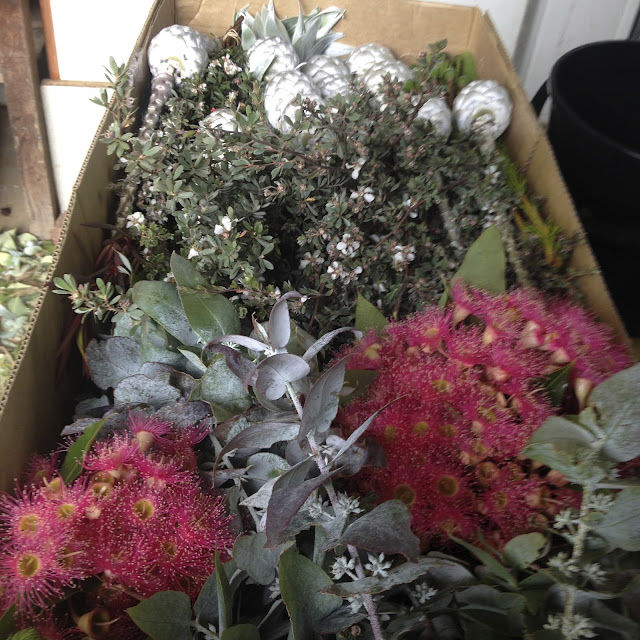I just love Waratahs, and being Tasmanian, I'm particularly fond of Telopea Truncata the Tasmanian Waratah. They flower in October/November and their vibrant colour has to be seen to be appreciated. It's one of those colours that's difficult to photograph.
After the recent flowering season, I decided to have a go at some serious seed collection, so I left some flowers on the bushes and allowed them to form pods. The waratah 'flower' is actually a group of flowers all arranged for maximum impact. Each individual stamen represents a flower that will potentially be fertilised.
This diagramatic illustration of the Telopea Speciosissima shows the structure, similar to the Tassie Waratah. You can see at the bottom centre the progression of the individual flowers that make up what we call the Waratah.
The seed pods are a bean-like shape. They hang down from the position of the original flowers in groups, the number depending on how many flowers have been pollinated. They are firstly green, and as they mature they turn brown and become more woody.
If left on the tree, they ripen and the warm autumn and winter sun splits them, causing them to reveal their seeds. Ideally, it is best to pick the pods as they are maturing and becoming a woody brown, but before they split. The structure of the seeds is such that they are easily knocked out of the pod and dispersed, and this can be frustrating if you are collecting.
Its far better to bring them inside as they mature and allow them to sit on a warm windowsill in a container the catch the seeds. Alternatively, place them in a paper bag and sit them somewhere warm where they can ripen fully.
When they do, the seeds are easily shaken or lifted out, revealing a pod that shows indentations where the seeds have been.
The seeds are winged with a papery appendage that is veined like an insects wing, presumably to aid dispersal in the wind. Quite beautiful!
I planted some seeds in Autumn, in a free draining mix in an open tray. They sat inside on a warm windowsill and I misted them daily. Around 3 weeks later, green shoots emerged!
Such an exciting and rewarding little exercise! The initial leaves were unlike the typical waratah leaf, of course, but then appeared the second set of leaves with a more familiar shape.
As they grew I potted them on, and I'm now looking forward to seeing them mature enough to plant out in the field.
If you'd like to have a go at growing your own Tasmanian Waratah seedlings, I have plenty of seeds available in the Swallows Nest Farm online shop (click on link to take a peek)


























